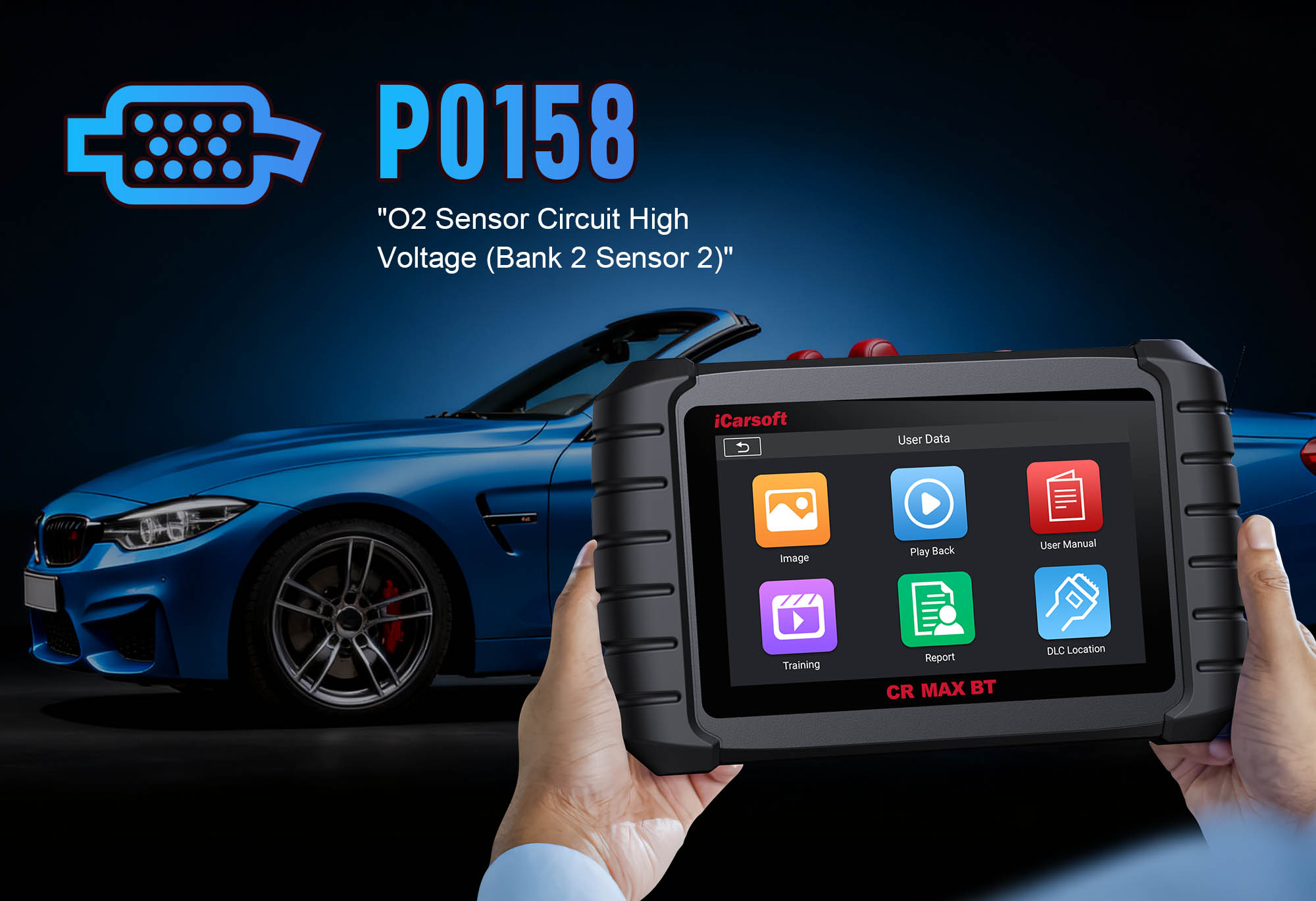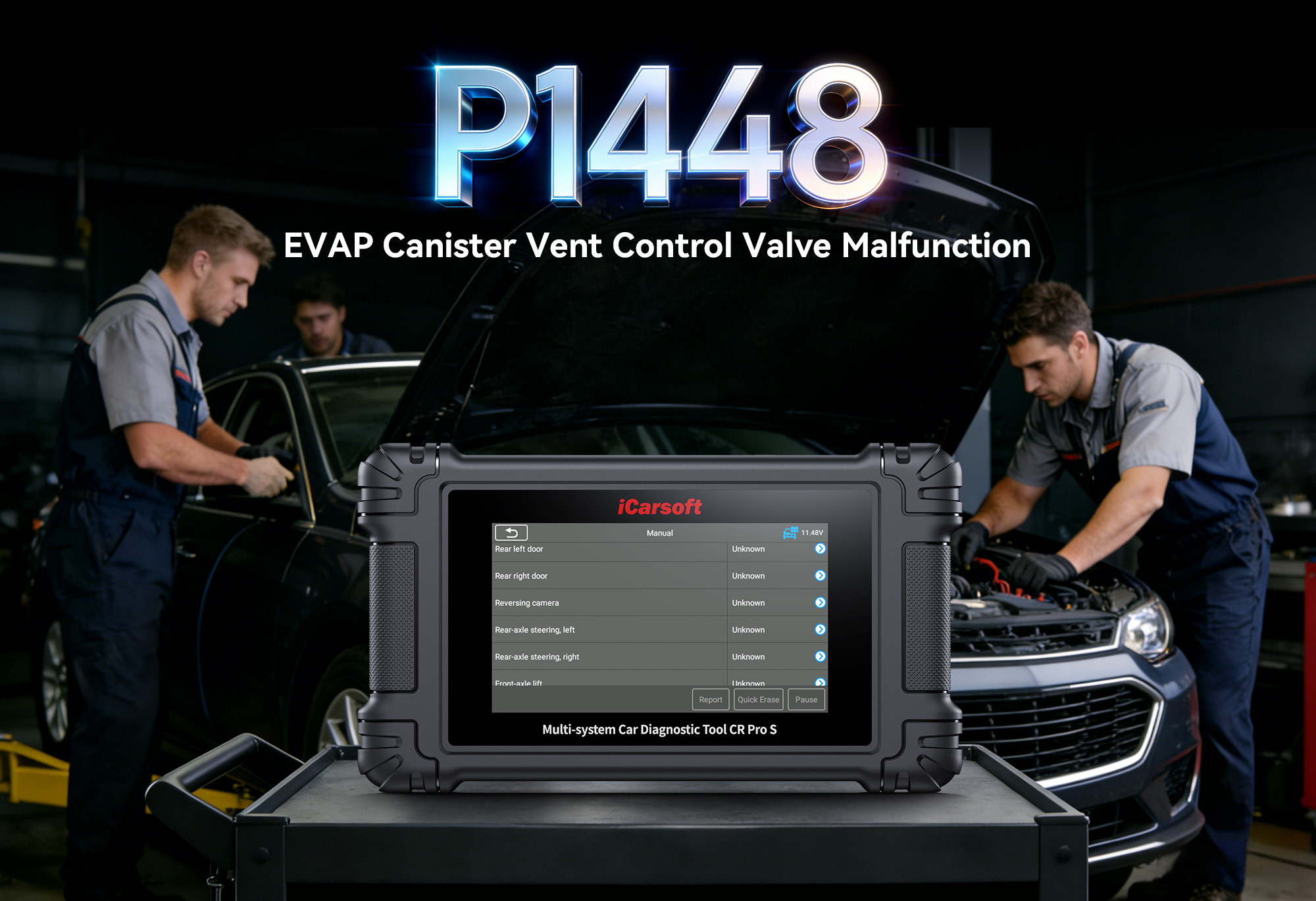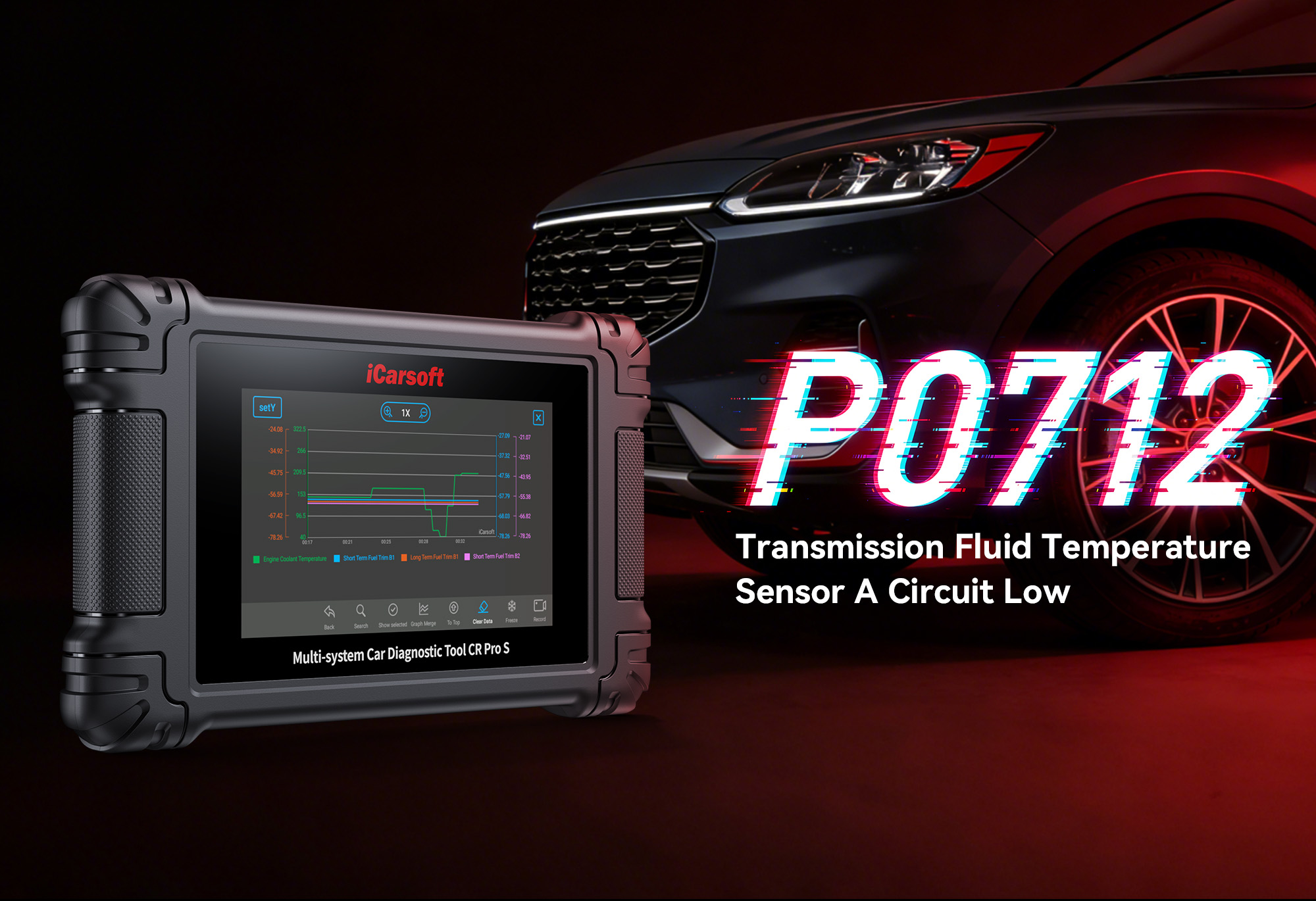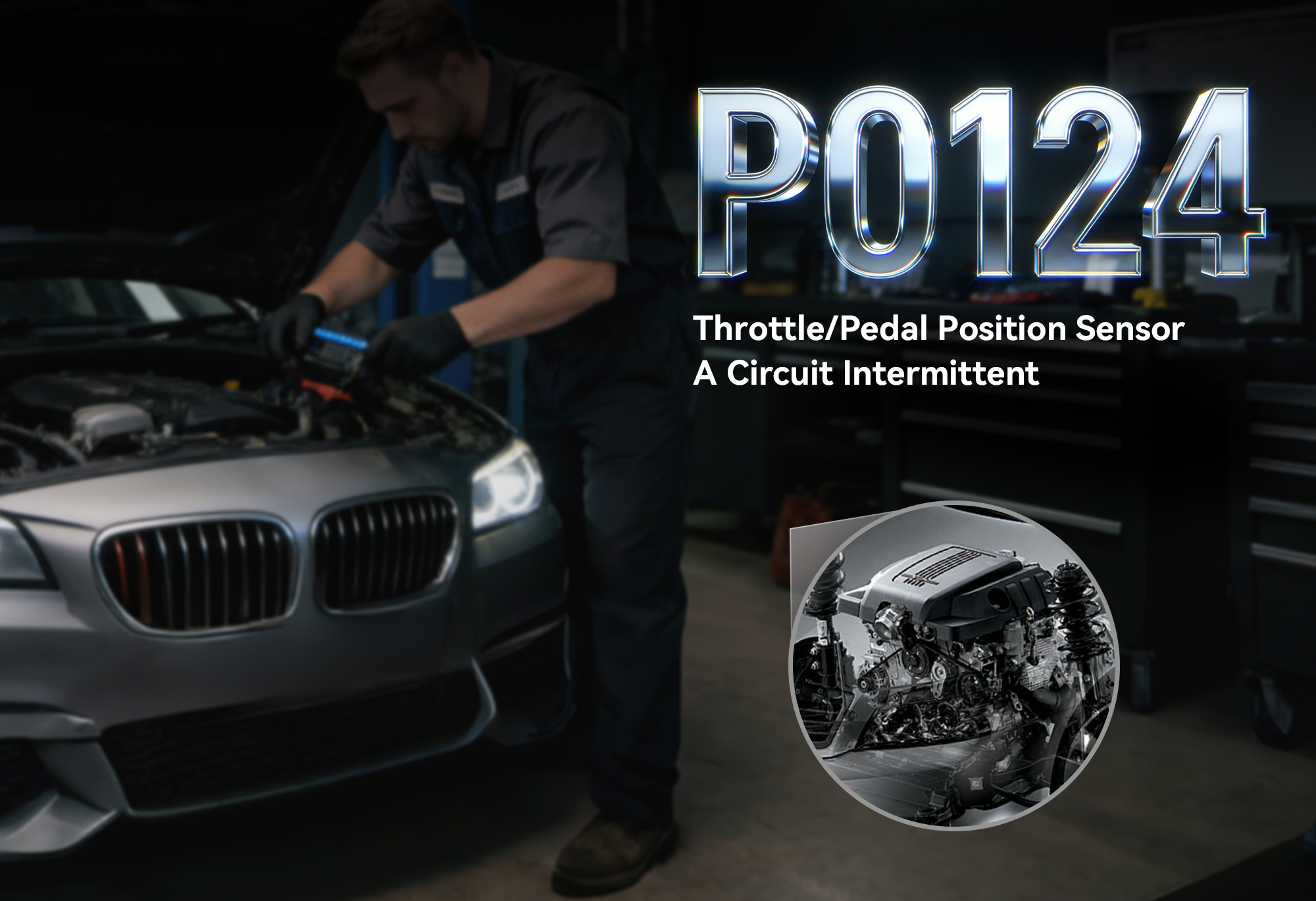Diagnose & Clear P0158 with iCarsoft CR MAX BT: Fix Oxygen Sensor Circuit High Input (Bank 2 Sensor 1)
If your check engine light illuminates and you notice decreased fuel efficiency or a noticeable drop in engine performance, a diagnostic scan will likely return P0158. This OBD-II code stands for "Oxygen Sensor Circuit High Input (Bank 2 Sensor 1)," indicating the Engine Control Module (ECM) has detected that the upstream oxygen (O₂) sensor in Bank 2 is sending an abnormally high voltage signal—typically above 0.9V for an extended period.
The upstream O₂ sensor (located before the catalytic converter) monitors the air-fuel mixture exiting the engine, sending real-time voltage signals to the ECM. A properly functioning sensor fluctuates between 0.1V (lean, excess oxygen) and 0.9V (rich, excess fuel). When P0158 occurs, the sensor remains stuck at high voltage, signaling a false rich condition that disrupts the ECM’s ability to adjust fuel delivery—leading to wasted fuel, increased emissions, and potential catalytic converter damage.
Basic scanners may only flag "O₂ sensor high input" but can’t analyze signal patterns or isolate circuit faults. The iCarsoft CR MAX BT—with its waveform analysis, voltage tracking, and dual-bank comparison—solves this. Let’s explore how to diagnose and resolve P0158 using this advanced tool.
 iCarsoft CR MAX BT: Analyzing Bank 2 Sensor 1 waveform to diagnose P0158 high input
iCarsoft CR MAX BT: Analyzing Bank 2 Sensor 1 waveform to diagnose P0158 high input
Understanding P0158: Causes & Key Symptoms
A high-input O₂ sensor signal disrupts the ECM’s air-fuel mixture adjustments, leading to distinct performance issues:
Key Symptoms of P0158
-
Check Engine Light: Illuminates when the Bank 2 Sensor 1 voltage exceeds 0.9V for 2+ minutes without normal fluctuation.
-
Decreased Fuel Efficiency: The ECM, misled by a false rich signal, reduces fuel delivery, causing lean misfires and lowering MPG by 10–20%.
-
Rough Idle or Hesitation: A lean mixture (from over-correction) leads to unstable idle, hesitation during acceleration, or even misfires in Bank 2 cylinders.
-
Catalytic Converter Damage Risk: Persistent lean conditions can overheat the converter, reducing its lifespan or triggering secondary codes (e.g., P0420).
-
Cold Start Issues: The ECM may struggle to enrich the mixture properly during cold starts, leading to extended cranking.
-
Stalling at Low Speeds: Severe lean conditions can cause the engine to stall when idling or decelerating.
Common Causes of P0158
-
Faulty Upstream O₂ Sensor (Bank 2 Sensor 1): Internal electrical failure (e.g., a shorted heating element or damaged sensing element) causes a stuck-high voltage.
-
Wiring or Connector Damage: A short circuit in the sensor’s wiring (e.g., frayed insulation touching the chassis) forces voltage above normal levels.
-
Oil Contamination: Oil entering the combustion chamber (from worn valve seals or piston rings) coats the sensor, impairing its ability to detect oxygen.
-
Exhaust Leaks: A leak before the O₂ sensor draws in excess oxygen, tricking the sensor into reading a false rich condition (rare but possible).
-
ECM Malfunction (Rare): A faulty module may incorrectly amplify the sensor signal or supply excessive voltage to the circuit.
-
Sensor Heating Element Failure: A shorted heating element (which warms the sensor to operating temperature) can cause high voltage readings.
Why iCarsoft CR MAX BT Excels at Diagnosing P0158
The CR MAX BT outperforms basic tools with features tailored to O₂ sensor diagnostics:
Oxygen Sensor Waveform Analysis
Visualizes the voltage pattern of Bank 2 Sensor 1, identifying a flat line above 0.9V (stuck high) versus normal fluctuations.
Dual-Bank Voltage Comparison
Cross-references Bank 2 Sensor 1 with Bank 1 Sensor 1 to highlight discrepancies (e.g., "Bank 2 = 0.95V, Bank 1 = 0.4V—isolates Bank 2 issue").
Live Voltage & Heater Circuit Testing
Monitors sensor voltage and heating element performance in real time, detecting shorts or open circuits.
3D Component Diagrams
Preloaded schematics show Bank 2 Sensor 1 location (before the catalytic converter on cylinder bank #2) for 80+ makes (e.g., Toyota, Ford, Audi, Hyundai).
Fuel Trim Correlation
Links O₂ sensor data to short/long-term fuel trim values to confirm if the ECM is over-correcting for a false rich signal.
Circuit Resistance & Continuity Tests
Built-in multimeter functions measure wiring integrity to identify shorts causing high voltage.
Step-by-Step: Diagnose P0158 with iCarsoft CR MAX BT
-
Connect & Confirm the Code
Plug the CR MAX BT into your vehicle’s OBD-II port and pair it with your smartphone/tablet via the iCarsoft app (Bluetooth setup takes 30 seconds). Select your vehicle using Auto VIN Scan (reads VIN instantly) or manual entry (make/model/year/engine). Navigate to Engine > Fault Codes > Read Codes to confirm P0158. Tap Code Details for vehicle-specific insights (e.g., "Toyota: O₂ Sensor Bank 2 Sensor 1 Voltage = 0.98V – Stuck High; Check Wiring").
-
Locate the Upstream O₂ Sensor (Bank 2 Sensor 1)
Use the CR MAX BT to avoid confusion:
-
Go to Component Location > Engine > Exhaust System > O₂ Sensor (Bank 2 Sensor 1).
-
The app displays a 3D diagram: Bank 2 is the cylinder bank opposite Bank 1 (e.g., cylinders 4–6 in a V6); Sensor 1 is the upstream sensor (closest to the engine, before the catalytic converter).
-
Analyze O₂ Sensor Waveform & Fuel Trim Data
Real-time data reveals the nature of the high-input issue:
-
Start the engine and let it reach operating temperature (10–15 minutes).
-
In the app, go to Engine > Live Data > Oxygen Sensors and monitor:
-
Bank 2 Sensor 1 Voltage: Normal = fluctuates 0.1–0.9V. P0158 = stays above 0.9V with little to no movement.
-
Short-Term/Long-Term Fuel Trim (STFT/LTFT): Normal = ±10%. Consistently high positive trim (+15% to +25%) = ECM is adding fuel to correct a false lean condition (confirms P0158’s impact).
-
Access Waveform Analysis under "Special Functions": A healthy sensor shows a zigzag pattern; P0158 shows a flat line above 0.9V.
-
Compare with Bank 1 Sensor 1
A Bank 1 comparison isolates Bank 2-specific issues:
-
Navigate to Engine > Live Data > Bank 1 Sensors.
-
Compare Bank 1 Sensor 1 voltage and fuel trim to Bank 2:
-
If Bank 1 is normal (fluctuating voltage, trim ±5%), the issue is isolated to Bank 2 (e.g., faulty sensor, wiring short).
-
If both banks show high voltage, the problem is systemic (e.g., ECM fault, shared wiring issue).
-
Inspect the O₂ Sensor, Wiring & Exhaust
Physical issues are often the cause—check with guidance from the CR MAX BT:
-
Sensor Inspection: Ensure the engine is cool. Locate the sensor using the app’s diagram. Disconnect the connector and remove the sensor (use an O₂ sensor socket). Check for:
-
Oil contamination (black, sooty coating with a burnt oil smell).
-
Physical damage (cracks in the sensor housing or bent probe).
-
White deposits (sign of coolant leakage into the exhaust).
-
Wiring & Connector Check: Follow the sensor’s wiring to the ECM (use the app’s diagram). Look for:
-
Frayed insulation (exposing wires that may touch the chassis).
-
Burn marks (sign of a short circuit).
-
Corroded or water-damaged connectors.
-
Exhaust Leak Test: Use the app’s Exhaust System Test to check for leaks before the O₂ sensor (a rare but possible cause of false readings).
-
Test the O₂ Sensor Circuit & Heating Element
Electrical faults cause 60% of P0158 cases—verify with the CR MAX BT:
-
Heating Element Resistance Test: Disconnect the sensor connector. Use the app’s Multimeter Function to measure resistance across the heater pins (refer to the app’s Pinout Guide). Normal = 10–40 ohms. 0 ohms = shorted element.
-
Circuit Short Test: With the ignition off, measure resistance between the sensor’s signal wire and the vehicle chassis. 0 ohms = short circuit in the wiring.
-
Reference Voltage Test: Turn the ignition to "On" (engine off). Measure voltage at the sensor’s signal pin. Normal = 0.45V (ECM bias voltage). >0.9V = shorted wire or ECM fault.
-
Repair & Clear P0158
Fix the Root Cause:
-
Replace the upstream O₂ sensor (Bank 2 Sensor 1) with an OEM or OE-equivalent part (check the app’s Part Lookup).
-
Repair wiring shorts: Replace frayed wires with heat-shrink connectors; insulate exposed areas.
-
Fix oil contamination issues: Replace worn valve seals, piston rings, or a faulty PCV system.
-
Repair exhaust leaks before the sensor (use the app’s Exhaust Repair Guide for tips).
Clear the Code: In the app, go to Engine > Fault Codes > Clear Codes to delete P0158.
-
Validate the Repair
Confirm the O₂ sensor and fuel system work correctly:
-
Recheck live data—Bank 2 Sensor 1 voltage should fluctuate 0.1–0.9V, and fuel trim should return to ±10%.
-
Test drive for 15–20 minutes (including highway speeds) to ensure smooth acceleration and stable idle.
-
Monitor for improved fuel efficiency and no hesitation during low-speed operation.
-
Re-scan with the CR MAX BT: No P0158 recurrence = successful repair.
Preventing P0158 Recurrence
The CR MAX BT helps maintain reliable O₂ sensor performance long-term:
-
O₂ Sensor Maintenance: Use the app’s Service Reminder to replace upstream O₂ sensors every 60,000–100,000 miles (sooner for turbocharged engines).
-
Wiring Inspection: Include O₂ sensor harnesses in annual undercarriage checks—protect wires from heat and abrasion.
-
Oil System Care: Fix oil leaks promptly and change oil regularly to prevent sensor contamination.
-
Regular Scans: Use the CR MAX BT’s Quick Scan monthly to monitor O₂ sensor voltage and fuel trim, catching high-input issues early.
Conclusion
P0158’s high O₂ sensor input disrupts critical air-fuel balance, but the iCarsoft CR MAX BT simplifies diagnosis with waveform analysis, dual-bank comparison, and circuit testing. Whether replacing a sensor, fixing wiring shorts, or addressing oil contamination, this tool ensures you resolve the root cause—restoring fuel efficiency, protecting the catalytic converter, and reducing emissions.
With the CR MAX BT, tackling "oxygen sensor high input" faults becomes a precise process, keeping your engine’s air-fuel mixture perfectly balanced for performance and longevity.

 iCarsoft CR MAX BT: Analyzing Bank 2 Sensor 1 waveform to diagnose P0158 high input
iCarsoft CR MAX BT: Analyzing Bank 2 Sensor 1 waveform to diagnose P0158 high input



